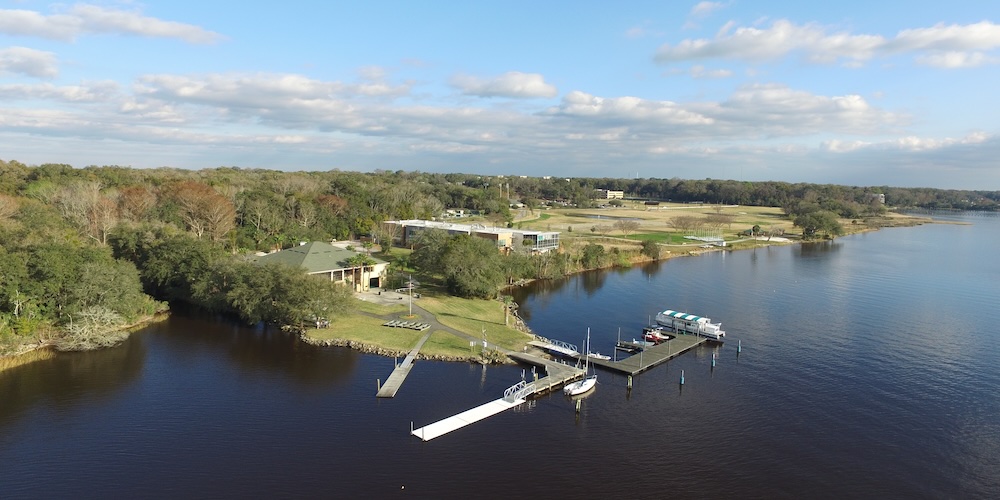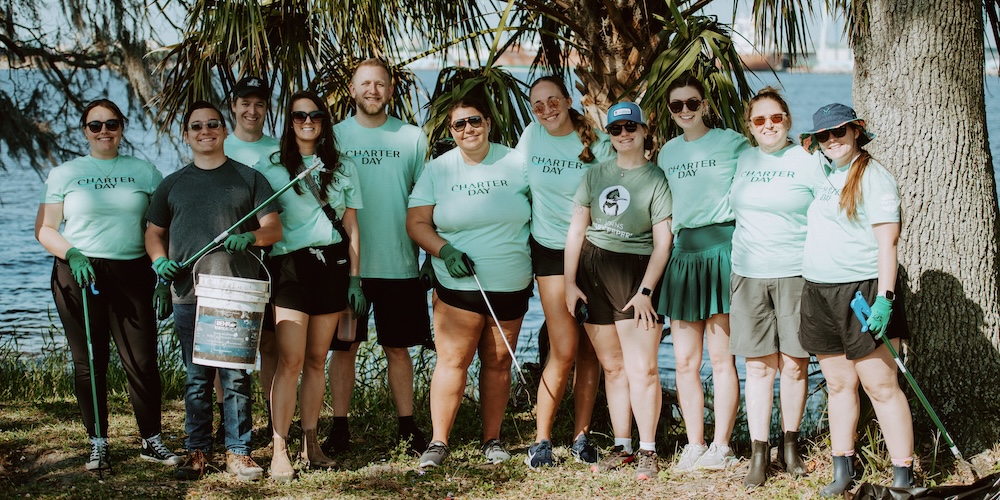The 2024 St. Johns River Report, jointly produced by an interdisciplinary team of scientists from University of North Florida (UNF), Jacksonville University (JU) and other universities, provides a comprehensive overview of the conditions in the Lower St. Johns River Basin and is updated annually to reflect positive and negative changes to this critical watershed.
The Jacksonville Environmental Symposium, organized by the City of Jacksonville’s Environmental Protection Board and hosted by the UNF Institute of Environmental Research and Education, has been rescheduled for Wednesday, Feb. 12, 2025, at the UNF Adam W. Herbert University Center. The symposium annually brings together leading experts in the field to discuss the St. Johns River Report and to share ideas. The February symposium will focus on building a resilient Jacksonville.
This year’s report, funded by the Environmental Protection Board, highlighted both signs of progress and areas of growing concern. The research team observed that the St. Johns River’s tributaries continue to suffer from severe pollution, notably high levels of fecal bacteria, phosphorous, and other pollutants. Additionally, development continues to threaten the river’s wetlands, and mitigation banks outpace more environmentally friendly alternatives like preservation, restoration, and enhancement. Rising salinity levels are impacting the river’s ecology, particularly submerged aquatic vegetation, while the water column is contaminated by various pharmaceuticals.
“This year’s report reflects persistent threats to the St. Johns River and its tributaries that are likely to be made worse by the effects of climate change, including cumulative impacts from nutrients, of which biosolids are a concern,” commented Dr. Gerry Pinto, one of the lead researchers on the report and associate research scientist at Jacksonville University’s Marine Science Research Institute.”
Fecal indicator bacteria levels in the tributaries are an ongoing concern. The 2022-24 FDEP biennial assessment reveals that 49 tributaries in the basin are impaired. For 41 of these, the source of contamination is confirmed to be human by chemical tracers or genetic markers. Failing septic tanks are a key contributor, and septic tank phase-out projects are advancing in three Jacksonville neighborhoods: Biltmore, Beverly Hills, and Christobel.”
“Bacterial contamination from failing infrastructure, and the loss of wetlands due to development pressures, including rising salinity and more non-native species, continue to stress critical habitats. Submerged aquatic vegetation has been slow to recover and nutrient pollution contributes to algae blooms that are yet not well understood.”
The report offered some hopeful findings. Overfishing is not a current risk for fin fish and invertebrate populations, resulting in positive impacts on their overall health. Despite recent storms’ effects on habitat, protected species are thriving.
Dr. Pinto explained, “This report gives us a glimmer of hope amidst ongoing challenges. We’re pleased to see most fin fish and invertebrates are not in danger of overfishing, and dissolved oxygen in the mainstem remains satisfactory. Protected species continue to fare well. There has been some increase in wetlands on state-managed lands and a reduction in sanitary sewer overflow volume since last year, and we remain optimistic that the positive trajectory will continue.”
In addition to these insights, this year’s report features story maps on flood risk and social vulnerability, along with a range of new maps in the Background section. Furthermore, this year’s report provides a useful and engaging summary of tools for K-12 teachers.
At JU, Dr. Gerry Pinto served as principal investigator of the report, while also writing on salinity, submerged aquatic vegetation, and updating information on fisheries. Dr. Gretchen Bielmyer-Fraser, Professor of Chemistry and Director of the Millar Wilson Laboratory, assessed water quality and contaminants. Dr. Nisse Goldberg, Professor of Biology and Marine Science, wrote about wetlands and non-native aquatic species.
Dr. William Penwell, Associate Professor of Marine Science, provided information about bacteria levels. Dr. Ashley Johnson, Associate Professor of Geography, created a story map on flood risk, resiliency, and social vulnerability, and assisted Dr. Goldberg with the creation of GIS maps of annual sanitary sewer overflows. Niki Spadaro provided important assistance as the technical editor of the report.
From UNF, Dr. Christopher Baynard, Associate Professor of Geography and Geographic Information Systems, updated the historical background section (adding several new maps) and edited the report for the general public. Dr. Dale Casamatta, Professor of Biology, edited and updated the chapter on algal blooms. Dr. Scott Jones, Assistant Professor of Biology, updated the chapters on nutrients and the tributaries.
Dr. Brian Zoellner, Associate Professor of Teaching, Learning & Curriculum, served as co-principal investigator, updated the chapter on materials for K-12 educators, and helped create presentations for secondary educators to teach their students about water quality, salinity, aquatic animals, invasive species and more. Dr. Charles Closmann, Associate Professor of History, created a new K-12 lesson plan on the history of the St. Johns River while also helping to update the report for the general public.
UNF’s Center for Instruction and Research Technology (CIRT), and especially Kayla Little, David Wilson, and Mike Boyles, provided valuable web support. Former UNF Professor Dr. Radha Pyati, now Chancellor and Dean of Penn State Berks, wrote the executive summary of the report and the turbidity section.
To view the entire report, visit the 2024 State of the River Report website.



